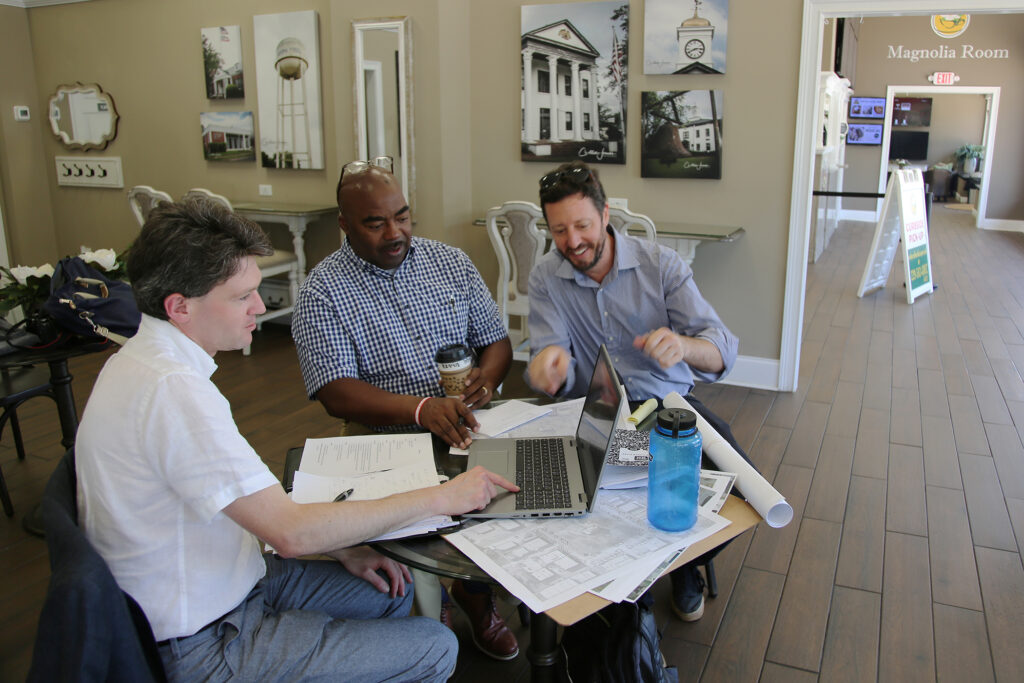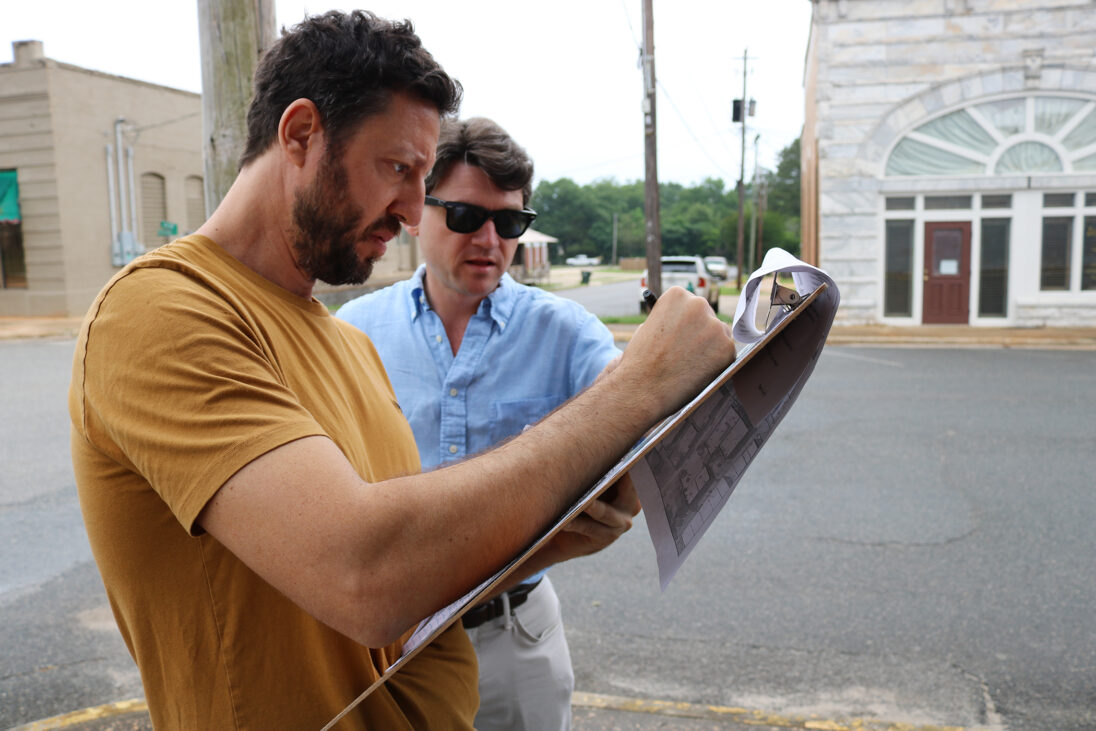Faculty, graduate students focused on developing a sense of community
Buena Vista is ready for a face-lift.
Steeped in the turpentine and cotton industries, the small (pop. 1,800) Georgia city about 30 miles east of Columbus today features a city square with wide streets surrounding an antebellum-era courthouse. Trucks carrying logs and gravel swing through town while cars regularly honk or wave to folks walking down the street.
Kevin Brown, a Buena Vista native and current mayor, sees a community poised for growth and is looking to the University of Georgia’s Carl Vinson Institute of Government to help guide the way.
“We all have ideas, but now it’s time to get a plan, so we can then go ask for support,” he said.
It’s a story that has played out in many smaller towns and cities across the state in recent years, and where faculty and students in UGA’s Georgia Downtown Renaissance Fellowship are making a difference.

In June, the Institute of Government’s Clark Stancil and Downtown Renaissance Fellows Franco Conocchiari-Scherer and Garrison Taylor met with Kevin Brown, mayor of Buena Vista, to discuss ideas for transforming the city. (Photo by Garrison Taylor)
In June, the Institute of Government’s Clark Stancil and Downtown Renaissance Fellows Franco Conocchiari-Scherer and Garrison Taylor met with Kevin Brown, mayor of Buena Vista, to discuss ideas for transforming the city. (Photo by Garrison Taylor)
The program enlists graduate students from the UGA College of Environment and Design to help breathe new life into Georgia’s small, rural cities like Buena Vista. Supported by the Lyndhurst Foundation, the Georgia Municipal Association and the Georgia Cities Foundation, the program has created 23 plans for community downtowns since 2013.
The experience is mutually beneficial — students get real-life experience while the city receives design ideas that spark excitement and, hopefully, the financial investment to turn plans into reality.
“We consider ourselves a catalyst to help create places that will bring communities together,” said Danny Bivins, a faculty member at the Institute of Government. “The 21st century model of economic development is all about community and place — giving people a space to gather and be together — so you need to do things to develop that sense of community to succeed.”
The timing for the fellowship is ideal for Buena Vista, which has been exploring ways to boost its economy since a Tyson Foods plant closed in 2015.
“That left a real big dent on our economy,” Brown said. “It pushed us to start focusing on tourism and trying to bring a transient population into the community to shop at our mom-and-pop shops and leave revenue with our small business community.”
Several community leaders and business owners gathered recently to share their needs and ideas with Clark Stancil, a creative design specialist with the institute, and this year’s Downtown Renaissance Fellows, Franco Conocchiari-Scherer and Garrison Taylor.
The group batted around ideas — from improving signage and beautifying sidewalks to screening dumpsters— to create a more inviting environment.
“My problem isn’t getting people in, it’s keeping them here,” said Joel Tischler, manager of Swamp Fox, a downtown distillery. Tischler suggested installing electric vehicle charging stations as a potential way to encourage tourists to stop and stay a while.
Capturing the thoughts and ideas of the community is key for students as they work to create realistic design options for a small city, from streetscaping, park planning, facade renovation or other physical improvements.
“A lot of this is trying to walk in somebody else’s shoes,” Stancil said. “You’re working with folks in a rural community and realize that, if you’re laying out this parking lot, it better accommodate a Ford F-250 or similar vehicle, right? It’s trying to appropriately match the community with the design.”
Conocchiari-Scherer, a first-year master’s degree student in landscape architecture, welcomes the challenge.
“This is much more complex than creating designs for a hypothetical situation like a class project. The key is to learn to listen to the client, provide several proposals, and create high-quality work that is appropriate for their needs,” he said.
A native Argentinian with a background in farming, Conocchiari-Scherer is also motivated by the public service aspect of the Georgia Downtown Renaissance Fellows program.
“I believe every student should be involved in a project that improves public space,” he said. “The most important goal of education is to improve the quality of life for our society and its communities. This is also a way of giving back to society for the privilege of being able to access a postgraduate education.”
Throughout the 12-week internship, the students meet regularly with the local stakeholders and city officials for feedback. At the end of the fellowship, students present a final plan to the community and a published report with renderings, plans and designs.
Having the vision on paper will drive future investment, Brown said.
“This is the tool we’re going to use to bring in a number of different agencies. I’m even sharing it with the River Valley Regional Commission so they can go out and start looking for funding for the different things that we’re trying to do as well,” he said. The River Valley Regional Commission includes Marion County, where Buena Vista is located.
Developing tools and facilitating partnerships for rural communities is a natural extension of the university’s land-grant mission, akin to helping direct a choir, Bivins said.
“It’s sheet music—you don’t get a choir singing together without sheet music, and you don’t get a community working together without a vision and a plan,” he said.

